Authority Member Digs Up Many Interesting Facts for His Talk to Baptist Men’s Club
Although the past several years have produced much published information regarding the Island steamship line, the talk on Friday night before the Baptist Men’s Club of Vineyard Haven, by Robert M. Love, brought out a volume of information that few of his audience had ever known before.
Dealing with the more than 150 years-history of steamboat transportation between the Island and mainland, Mr. Love styled his talk, The Evolution of Operation, Wood Boilers to Gas Turbines. He also brought out the little-known fact that far from being a new idea, the inclusion of Hyannis in the Island boat system was carried out over a long period of years and with a high degree of success.
Hotels, in both Hyannis and Nantucket, were built and filled to capacity as a result of steamboat service and the extension of the railroad to Hyannis was partially financed by private Nantucket interests, so great was the faith of that island in the foreseeable future of steamboat transportation.
No Detail Omitted
Mr. Love started at the beginning, continuing through the present day, and naming and describing the many steamers which have been regularly on the Island run. He did not mention the various other companies which also ran steamers from Boston, New York and other points on a seasonal basis. But he omitted no detail of the long years of struggling by Island interests to build up a dependable and regular service of steamboat transportation.
It was but very shortly after Robert Fulton’s successful trial of the Clermont that the first steamer went on the Island run. She was the Eagle, built in 1817, a wood-burning steamer, and with a cooper sheathed wooden boiler. She was 92 feet long, of 80 tons and could carry 60 passengers. She made the first run from New Bedford to Nantucket in something over eight hours, and, as the speaker observed, “the economic history of the Island steamboat line began right then and there.”
The venture did not prove to be successful and the boat was withdrawn form the line and not until ten years later did another appear, the Hamilton, of 50 tons, so low-powered that she could not easily stem the Woods Hole tide. To gain a greater head of steam she carried tar-barrels, which she burned when the tide set ahead, and the volume of sparks and flames rising from her stack apprised all that the Hamilton was arriving.
She Was Privately Built
Private funds built the next boat, the Marco Bozzaris, named form the poem, written by Fitz-Greene Halleck, then a clerk in the office of the builder. She was of 150 tons, and started the excursion business, on one occasion carrying 230 people from Nantucket to Hyannis. She also lightered passengers for Nantucket from larger steamers which could not cross the harbor bar. She regularly stopped at Edgartown, delivering Nantucket passengers there for a seventy-five cent fare, and she was the first steamer on the run to attempt to use coal, but without success. She ran for three years.
The Telegraph was built in 1833, of 171 tons, 60 horsepower engine and with 17-foot paddle wheels. She marked the beginning of the Nantucket Steamboat Co. Renamed Nebraska, she ran for twenty-two years.
The Masshachusetts was built in 1842, at a cost of $39,130. She was of 304 tons burden and gave good service, which was, nevertheless, interrupted by salvage operations. Yet the company could hardly be blamed for giving passengers service secondary consideration. One two-day salvage operation by the Telegraph and Massachusetts earned salvage awards of $31,000.
The Vineyard had now become a regular stop, although Nantucket interests objected to having the boat from that island reduce her running time to New Bedford by making the Edgartown stop. Another boat competed and the Martha’s Vineyard Steamboat Co. came into being. By 1854, steamers were covering the present run and including Hyannis.
The First Naushon
The first Naushon was built in 1846, Capt. Holmes Smith, master, and stopped both at Edgartown and Holmes Hole. The Eagle’s Wing came on the run in 1854, the largest boat yet, registered for 439 tons, with a fine dining-room aboard, where fancy meals with wine, were served. An altercation arose from the spelling of the sign on the ladies’ cabin, which was spelled “Ladie’s”. People argued about it for five years, but it was not changed. The Eagle’s Wing was the first walking-beam boat, and was commanded by Capt. Benjamin C. Cromwell.
The merger of the two Island lines took place at about this time and the Eagle’s Wing remained on the run. Various other boats were chartered as business increased, and the Island Home was built. Still larger, she was of 536 tons, and very fast. She is said to have covered nine miles on her trial run in thirty-one minutes. She ran from 1855 to 1895, a very long term of service.
There was much travel by boat in 1855, with fast packets running from New York, Hartford and New London, to the Vineyard, and the Metacomet, a new boat, was put on the run from Fairhaven to Edgartown. Then in 1862, the old workhorse Monohansett was built. The Eagle’s Wing had burned, but her engines were salvaged and placed in the new boat. She ran briefly, then went into government service during the Civil War, returning to enter into charter service and ending up on the regular run.
Periods of Growth
The Cottage City wharf and the Katama Railroad were both built during this period. The River Queen appeared, of 587 burden, and the two-boat system was instituted.
Then the first Martha’s Vineyard was built, the fastest boat yet, claiming 22 knots, in smooth water. Longer and shoaler boats had been the trend, and the first Nantucket, built in 1886, drew but 4 feet, 8 inches. She had tremendous paddle-wheels, hung very high and her engine had a ten-foot stroke.
The Gay Head, built in 1891, drew a trifle more water, but she also had high-hung paddle-wheels. There are still many people who can recall ducking under her main-shaft, which was less than four feet above the corridor floor traversed by all passengers. She was very fancy, with a Neapolitan dining-room seating 110 persons.
The Uncatena, the first steel boat, first with an electric search-light and first to carry cars, (six of them), next came on the run. She is said to have been the best, ice-breaker ever to be used on the Island line. The Sankaty was the first propeller driven boat, built in 1911, and although she rolled fearfully and had much trouble, she was reckoned to have been one of the best boats ever in operation up to that time. She was still running in 1939, although she had been burned, sunk and rebuilt.
The Largest Ever
Present boats and those of recent years were touched upon, notably the Naushon, largest boat ever to be on the run. She cost $600,000, had four decks and was built in four months. Because of her low cost she was paying proposition though seldom loaded to capacity, (something more than 2,000 people). Taken by the government, the Naushon distinguished herself for dodging misfortune and for saving many lives on torpedoed consorts on the North American coast and at Normandy during World War Two. She is still in operation in Long Island Sound as the John A. Meseck.
Mr. Love’s talk was spiced with anecdotes and odd bits of history, and was received with enthusiasm.
Thirty men were present at this meeting, at which $100 was pledged as the club’s contribution toward a movie-projector for the church. Refreshments were served by Ralph Robinson and O.C. Ruhmann.





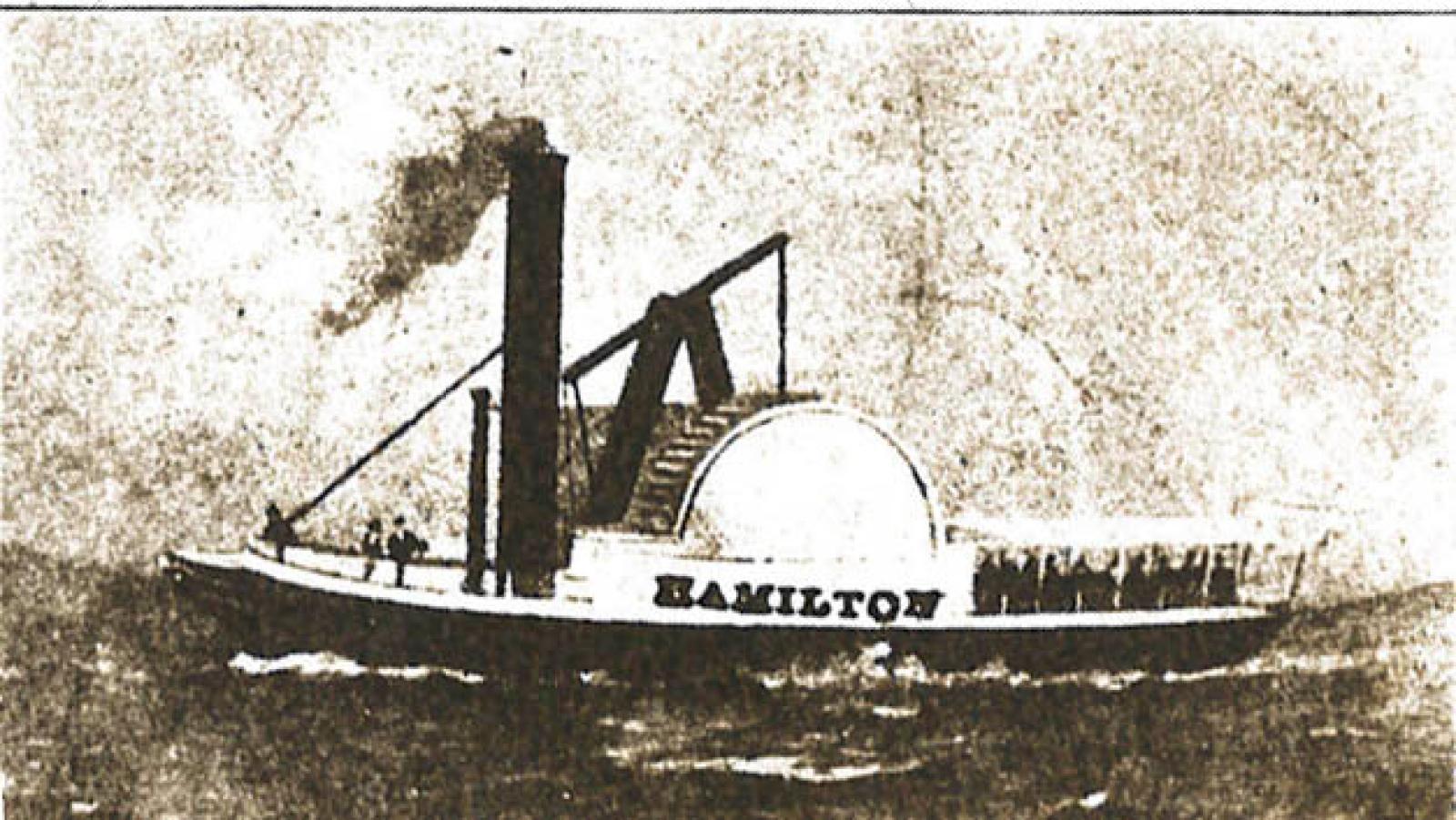
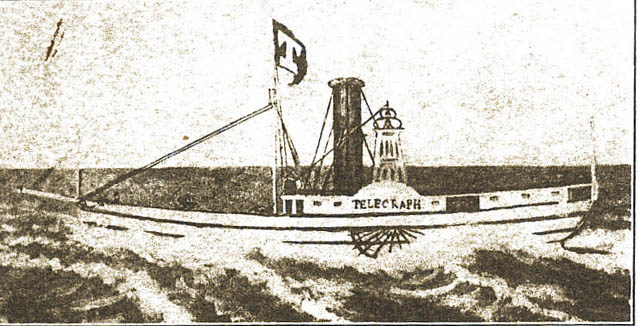
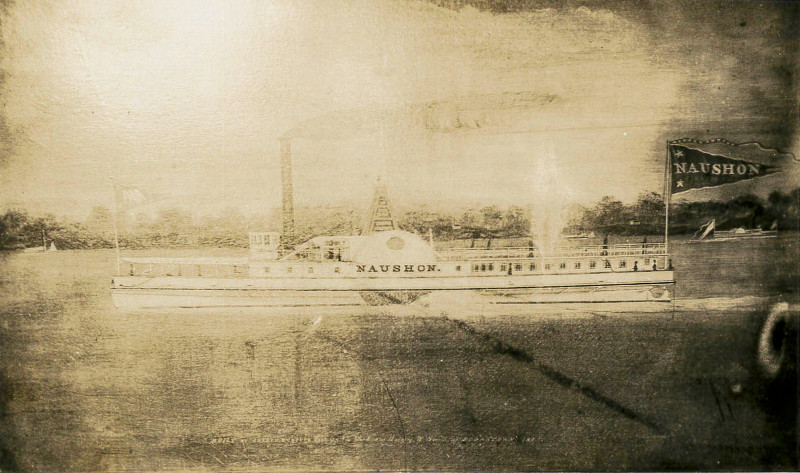
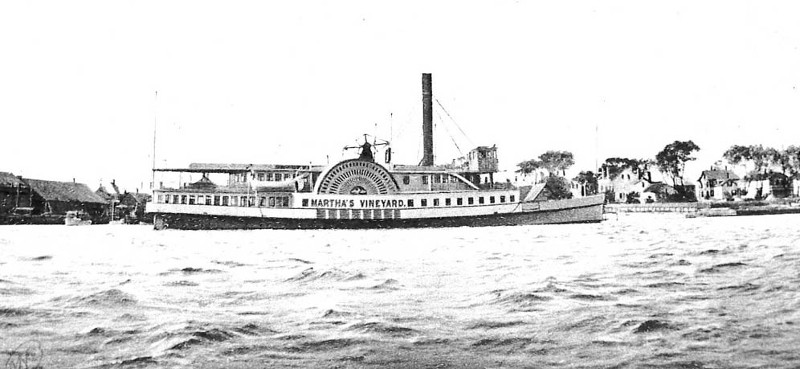
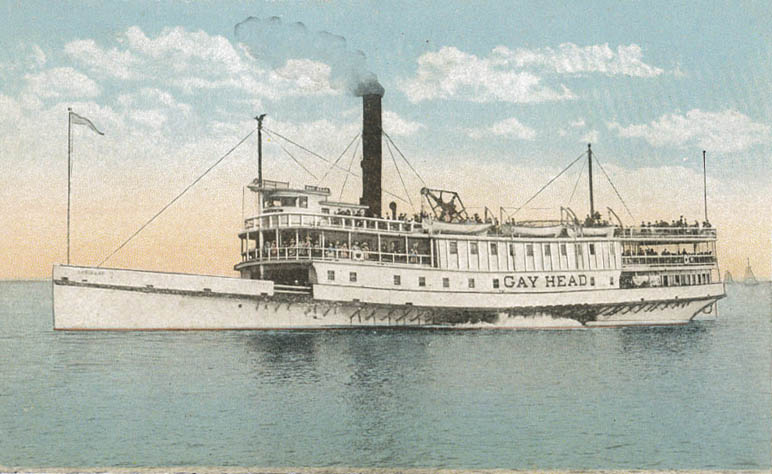
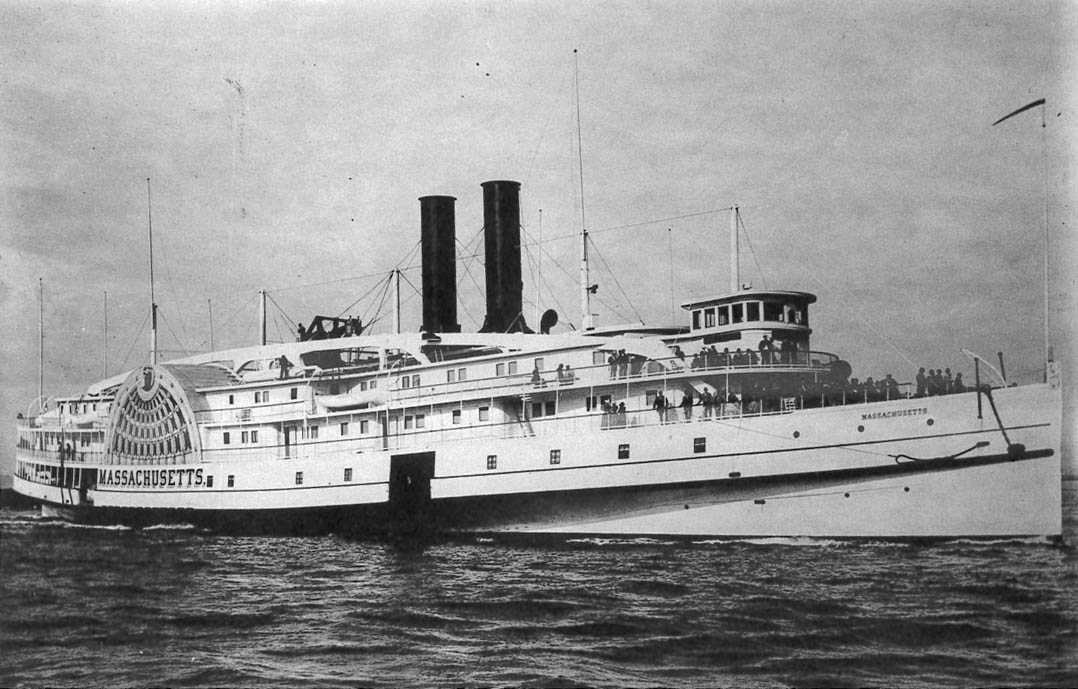
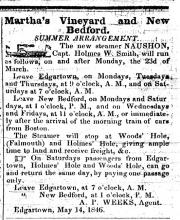

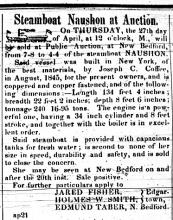
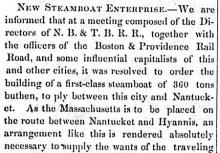
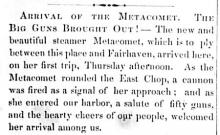
Comments